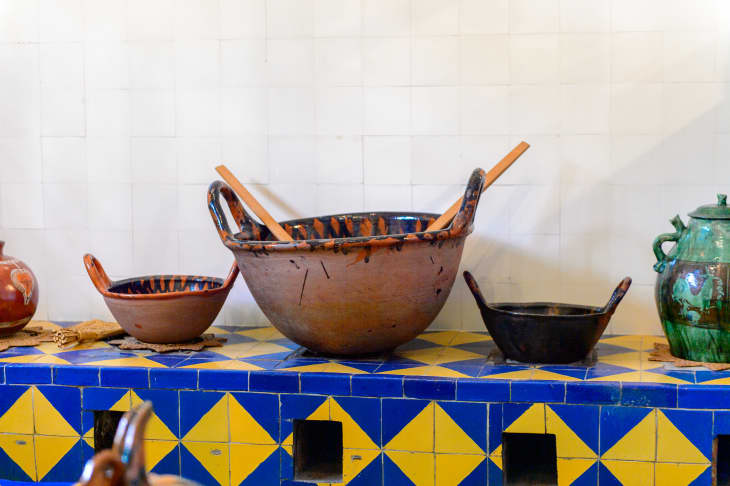5 Kitchen Tools My Mexican Grandma Can’t Live Without

Quick, what comes to mind when you hear the term “Mexican food”? Is it chips and salsa, or perhaps fresh guacamole? For me, it’s just… you know, food, the stuff my family made every day when I was growing up, whether it was my dad’s Saturday ritual of scrambling eggs with spicy chorizo, or the platters full of carne asada and tamales that marked almost every holiday and family gathering.
The pinnacle of such cooking to me is what my grandmother — whom we affectionately call Pica — churns out on a daily basis, and has for decades. With eight children, dozens of grandchildren, and now great-grandchildren to love and dote on, she often shows her affection by cooking for us. I’m nowhere near as accomplished a cook as she is, but I constantly find myself pulling inspiration from her kitchen habits and her favorite tools.
Here are five utilitarian tools that define her kitchen to me, and how I’ve implemented some of them in my own kitchen, thousands of miles away.
A Comal
Akin to a flat griddle, a comal can do everything from cook and reheat tortillas, to toast chiles if you’re not intrepid enough to flip them over an open flame (we’ll get to that in a second). Some comals are made from cast iron and require the same amount of care that the rest of your cast-iron collection does — it’s because of this maintenance, I suspect, that my grandma has always opted for a steel comal that almost never leaves its coveted space on the stove. I’ve even used mine to cook pancakes and sear tofu.
A Blender
From salsa to liquados and horchata, there are plenty of recipes that come together with the press of a button on the liquadora — which is to say, a blender. You don’t need a fancy version to get the job done (in fact, I’m sure my grandma’s blender is older than some of my cousins) but here’s Apartment Therapy’s roundup of the best blenders on the market if you’re looking to invest in or upgrade one of your own.
Tortilla Towels
One of my favorite rituals when visiting my family in Mexico City would be our regular trip to the local tortilleria, a busy room with a giant machine that turns out fresh corn tortillas at an alarming rate (though other shops make tortillas entirely by hand). Pica would buy a stack of tortillas to last through several days, and would wrap the purchase in a clean cotton towel she brought with her. Not only is the towel reusable, but it traps moisture in a way that allows the tortillas to stay fresh without drying out. Another way to avoid grabbing a slightly-stale tortilla on day three? Always pull from the middle of the pile, and save the end pieces for chilaquiles.
Extra-Large Pots
I have a big family — including seven aunts; six uncles; and 21 first cousins, many of whom have partners and/or have started having children of their own — and almost everyone stops by my grandma’s house on a regular basis. For her, cooking large batches of food is both practical and necessary, since you never know who will show up. That’s why she has extra-large ollas and cazuelas — clay pots of various shapes, which can be used for everything from baking to simmering soups and stews — at the ready. I cook for myself, so I typically need is a 3 1/2 or 4-quart vessel to make multiple servings, but Pica’s insistence on cooking enough for everyone has certainly bled over into my habit of cooking multiple servings for several days’ worth of leftovers.
Her Hands
Whether she’s patiently kneading masa (which, for the record, can take upwards of two hours, given how large our family is) or flipping poblano peppers over an open flame to char the skin, my grandmother’s hands are probably her most-used and most important kitchen tool. Many cooks rightfully stress the importance of tasting dishes as you go, but just as many believe knowing how things feel is integral to cooking as well. I have yet to work up the nerve to touch a roasting pepper on my stove — and prefer the safer method of roasting them in the oven — but my favorite part of watching my grandmother work in the kitchen has always been how sure and confident her hands are. I can only hope that, with practice, mine will pick up on that fearlessness, too.